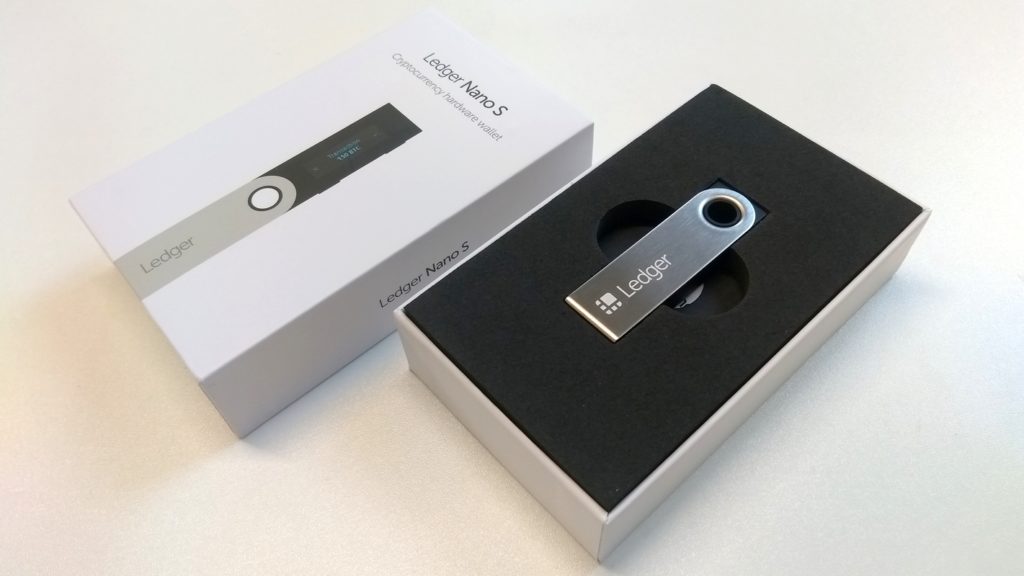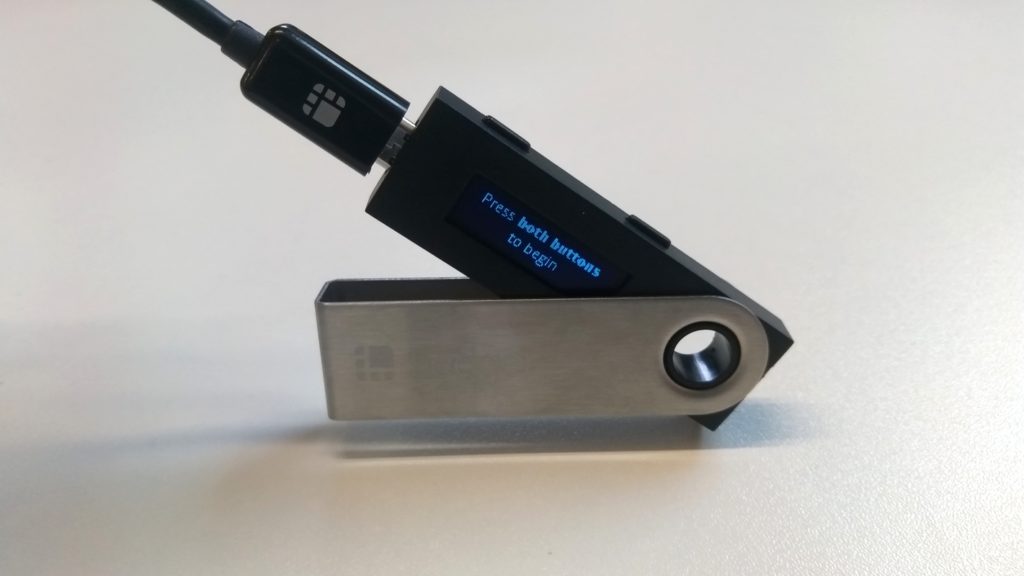Ledger Nano S Review
8 min readTable of Contents
One of the best ways to keep your cryptocurrency safe is to use a hardware wallet—a secure hardware device for storing your private keys. Unlike web and mobile wallets, a hardware wallet can’t be hacked without having access to the device itself, meaning there’s one less way that your funds can be stolen.
The Ledger Nano S is one of the best-known crypto hardware wallets, having sold well over a million units worldwide. But does it still cut it in 2021?
What is the Ledger Nano S?
At $69, the Ledger Nano S is one of the cheaper hardware wallets on the market. It supports more than 1,100 cryptocurrencies, and has a sleek design and simple user interface.
But it’s coming up for its fifth birthday in 2021—an eternity in tech hardware terms—and it’s since been superseded by its feature-packed sibling, the Ledger Nano X.
So is it worth shelling out for the extra bells and whistles, or does the simpler, cheaper option still have what it takes? We’ve taken a detailed look at the setup process and what it’s like to use the wallet.
Ledger Nano S: Design and build
The Ledger Nano S isn’t going to win any design awards, but neither does it have the clunky aesthetic of rival hardware wallets like the Trezor One.
“Discreet” is probably the best word to describe it; indeed, if it weren’t for the Ledger branding etched on its aluminum shield, you could easily mistake it for an old—if slightly chunky—USB flash drive.
Rotate it open, however, and some differences immediately become apparent: there’s a (tiny) screen, a micro-USB socket and two buttons atop the device for navigating its menus.

The Nano S is available in a variety of colorways, including green, pink, and a rather fetching transparent model. As well as letting you coordinate your Ledger with your wardrobe and interior decor, it’s also handy for distinguishing between main and backup devices (or, if you’re a crypto high roller who wants to split up their holdings, between different accounts).
Ledger Nano S: What’s in the box?
The Nano S packaging is simple, minimalist, and clearly draws inspiration from Apple’s designs. Unlike some manufacturers, Ledger doesn’t bother with an anti-tamper seal—it argues that the seals are easy to counterfeit and can be misleading.

Inside the box, you’ll find the Nano S device itself, along with a quick start guide, three cards for recording your recovery phrase, a micro-USB cable, a lanyard, and a loop for attaching your Nano S to a keyring.
Ledger Nano S: Getting started
To set up the Ledger Nano S, you’ll first need to download and install the Ledger Live application; upon launch, you’ll need to set up a password.
Once you’ve done that, connect your Ledger to your computer using the supplied micro-USB cable, and follow the on-screen prompts to set up your device. Most of the next steps are made on the device itself, and are (initially) straightforward—the only thing you’ll need to do is set up a PIN.
To navigate through the menus, use the two buttons on top of the device; click the right button to go right/up, the left button to go left/down and both buttons to select a menu item or respond to a prompt.

The next step is a little more arduous. The Ledger generates a 24-word secret phrase, which you’ll need to record on one of the cards supplied with the device. That means clicking through to each word, copying it down, double-checking to make sure it’s accurate, and then re-entering the words to confirm that you’ve recorded them correctly.
It’s a tedious process, but necessary; in a very real sense, the 24-word phrase is your wallet, and the Ledger simply provides a portal through which you access it. If you lose your Ledger device (or forget your PIN number), you can enter the recovery phrase on a new Ledger, and still have access to your crypto assets. If you lose your recovery phrase, you’re stuffed.
Some wallets require you to enter your secret phrase into an app, which then sends it to the device—meaning the hardware wallet is pointless if your phone is hacked or stolen. By keeping the secret phrase airlocked and only held on the Ledger device, security is maximized.
That also means you need to keep your recovery phrase very secure. Some Ledger users have resorted to recording their 24 words in a metal wallet (card, after all, can be burned or disintegrate in water), or splitting their recovery phrase up and storing it in multiple locations.
Once you’ve chosen a PIN and recorded your recovery phrase, you’ll need to verify your device through the Ledger Live app, which should take just a few seconds.
Ledger Live
The Ledger Live software is, for most users, the main way you’ll interact with your Ledger Nano S. Fortunately, it’s a beautiful, streamlined app that is very easy to use.
Unlike the Nano X, which has Bluetooth connectivity and an internal battery, you’ll need to connect the Nano S to your computer via a micro-USB cable in order to use Ledger Live. You can also use the Nano S with Ledger Live’s Android mobile app, using the Ledger OTG kit.
Each time you plug the device in, you’ll need to enter your PIN code.
The first thing you’ll need to do on launching is to add some apps to your Ledger. To do this, navigate to “settings” in the left-hand column of Ledger Live. You’ll be prompted to “allow Ledger Manager” on your device. Here you can check whether your device has the latest firmware (and update it if necessary), and add or update apps.
Apps essentially represent cryptocurrency coins or tokens; Bitcoin, Ethereum, Cosmos and so forth. When you install the relevant app, you’ll need to add an account; this will then show up in the “portfolio” section of Ledger Live.
Once you’ve installed your apps, you can send and receive crypto. To receive, you can either navigate to the “Accounts” section and pick whichever account you want to use, or use the “send” and “receive” buttons in the sidebar and select your chosen cryptocurrency from the drop-down menu.
You’ll also need to open the app for the relevant cryptocurrency on your Nano S device.
To send or receive, you’ll need to confirm the sending or receiving address on your Ledger Nano S. This can be a fiddly business; it involves checking the address in Ledger Live against the characters on the Ledger’s tiny screen (which is so small it can’t render the entire address on one screen, forcing you to click through to see the whole thing).
That’s the most painful part of the process, though; once you’ve done that, it’s plain sailing. Sending and receiving crypto is a smooth process; Ledger Live also offers options for buying and selling certain cryptocurrencies directly in the app.
Ledger Nano S: ease of use and features
You’re not just limited to using the Nano S with Ledger Live, however. The hardware wallet can also be used in conjunction with web wallets, such as MetaMask, MyEtherWallet, and MyCrypto.
You can also use the Nano S as a security key for two-factor authentication, by installing the FIDO U2F app. This enables you to verify your login credentials using your hardware wallet on a number of different web services, including Google, Facebook, GitHub and Dropbox.
There’s also a recovery check app, which enables you to check that you’ve recorded your recovery phrase accurately without requiring you to reset your Ledger.
Ledger Nano S: supported assets
The Ledger Nano S supports over 1,100 crypto assets, 29 of which you can manage directly using Ledger Live. Some of the coins and tokens available include:
- Bitcoin (BTC)
- Ethereum (ETH) and ERC20 tokens
- XRP
- Bitcoin Cash (BCH)
- Litecoin (LTC)
- Tether (USDT)
- Binance Coin (BNB)
- EOS
- Stellar (XLM)
- Cardano (ADA)
- Monero (XMR)
- Cosmos (ATOM)
- Polkadot (DOT)
However, because of the limited storage capacity of the Nano S, you’ll only be able to run two or three of the relevant wallet apps on the device at any one time. If you have a diverse portfolio, you might want to consider the Nano X as an alternative, as its expanded internal memory means that it’s able to store a lot more apps at once.
Ledger Nano S: Security
Obviously the most important part of a hardware wallet is its security credentials, and Ledger hasn’t skimped in that regard. Like the Nano X and Ledger Blue, the Nano S has a physically isolated secure element that’s CC EAL5+ certified—the highest such rating available against penetration tests.
These secure elements are similar to those used in credit cards, passports and SIM cards; in addition, Ledger uses its own proprietary operating system, BOLOS. This ensures that the various applications running on the Nano S, and the 24-word recovery phrase, are isolated from each other, and requires that physical confirmation for each transaction needs to take place.
The Nano S and Nano X are also the only hardware wallets to receive CSPN (First Level Security Certificate) certification, from ANSSI—the National Cybersecurity Agency of France.
While Ledger’s physical security is extremely tight—making it one of the most secure cold storage solutions on the market—Ledger the company has had some embarrassing security lapses in the past.
Notably, in June 2020, data from its e-commerce database was leaked, with over a million customer records finding their way to hacker forums. As a result, some Ledger customers found themselves at the mercy of phishing attacks, and even threats.
As a result, Ledger has committed to changing its procedures for handling customer data, though it’s scant comfort to those who have had their personal information (and the fact that they hold enough cryptocurrency for it to be worth securing in cold storage) exposed.
Ledger Nano S review: Verdict
It may be getting a bit long in the tooth, but at just $69, the Ledger Nano S is a steal—either as a backup device if you already own a Nano X, or as a cold storage solution in its own right.
Its main limitations are its storage capacity (meaning that you can only run two or three apps on it at any given time), its tiny screen, and the fact that you need to plug it into a computer to use it. All of these are addressed by the Ledger Nano X, though the extra $60 is quite a steep price increase for the upgrade.
For most people, especially those with a small portfolio of crypto assets, the Nano S is a reliable workhorse, and all the wallet you’ll need.






![Decentraland: Review & Beginner's Guide [current_date format=Y] 29 Decentraland: Review & Beginner's Guide](https://cryptheory.org/wp-content/uploads/2020/11/decentraland-02-gID_7-300x150.jpg)